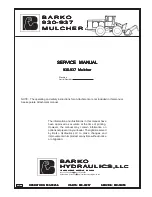
15
Subject to change without notice
coefficient into calibrated condition and activates the
attenuator function. The previous vernier setting will not be
stored.
The
CHI
pushbutton can also be pressed simultaneously with
the
DUAL(19)
button.
Please note item (19)
.
(19) DUAL - XY
– Pushbutton with multiple functions.
DUAL mode:
Briefly pressing this button switches over to DUAL mode.
Both deflection coefficients are then displayed. The previous
trigger setting stays as it was, but can be changed.
All controls related to both channels are active, if the inputs
(28)
and
(32)
are not set to
GD (30) (34)
. Whether alternated
or chopped channel switching is present depends on the
actual time base setting, and is displayed in the readout.
ALT
displayed in the readout, indicates alternate channel
switching. After each time base sweep the instrument
internally switches over from channel I to channel II and vice
versa. This channel switching mode is automatically selected
if any time coefficient from 200µs/div to 50ns/div is active.
CHP
indicates chopper mode, whereby the channel switching
occurs constantly between channel I and II during each
sweep. This channel switching mode occurs when any time
base setting between 500ms/div and 500µs/div has been
chosen.
The actual channel switching can be changed to the opposite
mode by briefly pressing both
CHI (18)
and
DUAL (19)
simultaneously. If afterwards the time coefficient is changed,
the channel switching is automatically set to the time
coefficient related mode.
ADD mode:
Addition mode can be selected by briefly pressing the
DUAL
(19)
and
CHII (22)
buttons simultaneously. Whether the
algebraic sum (addition) or the difference (subtraction) of both
input signals is displayed, depends on the phase relationship
and the
INV (30) (34)
setting(s). As a result both signals are
displayed as one signal. For correct measurements the
deflection coefficients for both channels must be equal.
The readout indicates this mode by a “+” sign located
between both channel deflection coefficients. While the
trigger mode is not affected, the trigger point symbol is
switched off. The Y-position of the signal can be influenced
by both
Y-POS
controls
(9)
and
(11)
.
XY mode:
This mode can be switched on or off by pressing and holding
the
DUAL
button
(19)
.
In
XY
mode the deflection coefficients are displayed as
“X...”
for channel I and
“Y...”
for channel II, followed by
“XY”
. Except
the cursor lines which may be active, all other readout
information including the trigger point symbol are switched
off. In addition to all trigger and time base related controls,
the
Y-POS. I (9)
knob and
INV (30)
button are deactivated.
For X position alteration, the
X-POS. (15)
knob can be used.
(20) TRIG. - ALT
– Pushbutton with double function for trigger
source selection and associated LEDs.
The button and the LEDs are deactivated if line (mains)
triggering is selected or XY operation is chosen.
With the aid of this button, the trigger source can be chosen.
There are three trigger sources available: channel I, channel
II (both designated as internal trigger sources) and the
TRIG.
EXT. (35)
input for external triggering.
The availability of the internal sources depends on the actual
channel mode. The actual setting is indicated by the
associated LED(s). Briefly pressing the button switches over
in the following sequence:
I - II - EXT - I in DUAL and ADD (addition) mode,
I - EXT - I
if mono channel I is present,
II - EXT - II
under mono channel II conditions.
Each condition is indicated by the associated LED and
displayed by the readout (
“TR:Y1...”, “TR:Y2...”
and
“TR:EXT...”
). The trigger point symbol is switched off in
external trigger condition.
ALT:
Pressing and holding the button selects alternate triggering
in
DUAL
mode. Under these conditions both I and II LEDs
are lit and the readout displays
“TR:ALT...”
. As alternate
triggering requires alternate channel operation, alternate
channel switching is set automatically. A change of the time
coefficient then has no affect regarding the channel switching
mode. In addition to the deflection coefficients display,
“ALT”
is displayed by the readout instead of
“CHP”
. In alternate
trigger mode the trigger point symbol is switched off.
Alternate triggering
is not available or automatically
switched off under the following conditions:
– ADD
(addition) mode,
– alternate
(A & B) time base mode,
– B
time base mode,
– TVL, TVF
and
line
(mains) trigger coupling.
(21) VOLTS/DIV.
– This control knob for channel II has a double
function.
The following description relates to the input attenuator
function (VAR LED dark). The vernier function is active if the
VAR LED is lit (see
VAR
under item
(22)
).
Turning the control knob clockwise increases the sensitivity
in a 1-2-5 sequence and decreases it if turned in the opposite
direction (ccw.). The available range is from 1mV/div up to
20V/div. The knob is automatically switched inactive if the
channel related to it is switched off, or if the input coupling is
set to
GD
(ground).
Controls and Readout
MADE IN GERMANY
A/ALT.
DEL.TRIG
TRS
PUSH
BOTH
PUSH
LONG
VAR.
B
CH I
CH II
DEL.POS.
ADD
CHP.
VAR.
VAR.
DUAL
X-Y
VOLTS / DIV.
VOLTS / DIV.
TIME / DIV.
5V
1mV
5V
1mV
0.5s
20ns
TRIG. MODE
TRIG.
ALT
CHI
AC
DC
HF
NR
LF
TVL
TVF
CHII
EXT
Y-POS. I
Y-POS. II
LEVEL
X-POS.
NM
AT
X-
MAG.
63
-K
304-0040/
00
55
BWL
BW
LIMIT
VAR
VAR
TR
NM
HO
VAR
x10
17
18
19
20
22
23
24
25
26
27
21
9
10
12
11
14
16
15
13
8
















































